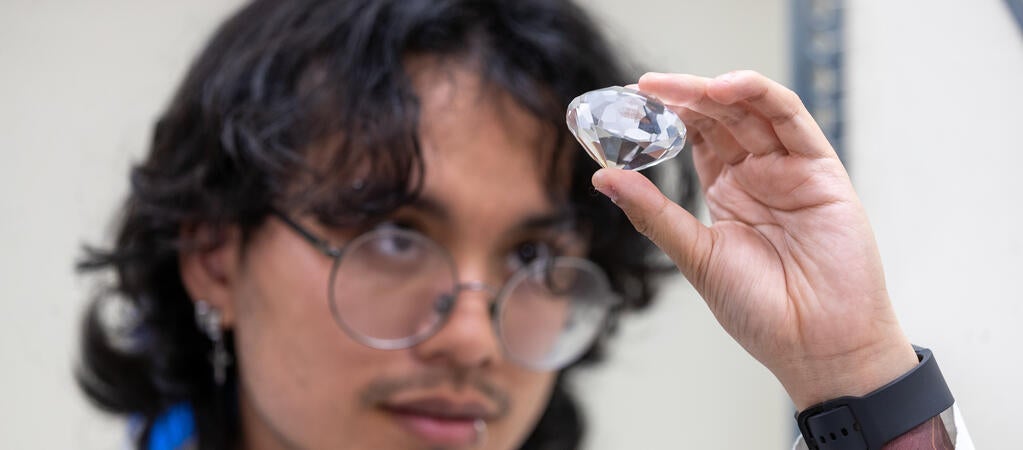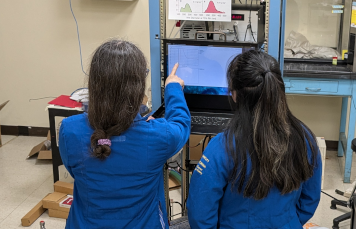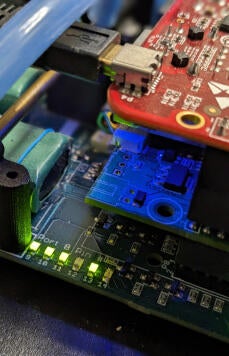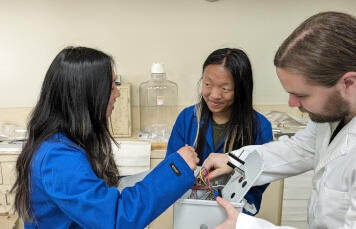
CE-CERT Team Joins Department of Energy’s Atmospheric Radiation Measurement Facility Mentorship as Instrument Mentor

A team from CE-CERT is spearheading the development of a network of spectrometers to serve as part of the Department of Energy’s Atmospheric Radiation Measurement (ARM) user facilities. The Atmospheric Nanophysical Chemistry lab is designing and building these sensors, which will be integrated into ARM’s infrastructure. ARM deploys its facility around the globe, and has reported from places like the North Slope of Alaska, the Gan Island of the Maldives, and the Black Forest of Germany.
CE-CERT is joining the effort just as ARM and collaborators at several universities prepare for the Coastal-Urban-Rural Gradient Experiment (CoURAGE), a large field campaign that seeks to improve urban air quality predictions in coastal cities. The sensors will be placed in an array tracing the airmass upstream of Baltimore, Maryland, in downtown Baltimore, and in the downstream Chesapeake Bay islands. CE-CERT is preparing several portable optical particle spectrometers (POPS) to be installed at the field sites in Maryland for the duration of the campaign.

In the runup to installation in the field, the Atmospheric Nanophysical Chemistry at CE-CERT is testing the instruments at an air quality observation site in Riverside in collaboration with UCR’s Roya Bahreini. The CE-CERT team consists of members of the Atmospheric Nanophysical Chemistry lab, including Dr. Sarah Petters and senior undergraduates Keila Sakaguchi and Chis Solares.
“The air quality in urban centers is influenced by what is upstream,” explains Sarah Petters, who leads the effort at CE-CERT. “Aerosols can provide a condensation sink for low-volatility compounds, and they can influence atmospheric thermodynamics by seeding clouds.” The network will be strategically placed to observe aerosol size distributions during the nearly year-long deployment in Maryland. “The instruments will need to be relatively low-maintenance,” she added.
DOE’s ARM user facilities provide ground-based observations around the world to further climate research. The ARM user facility has deployed POPS instruments as part of their aerial measurement platform and will be adding a ‘flying POPS’ to the CoURAGE campaign in parallel. CE-CERT is deploying stationary long-term POPS instruments in Baltimore, where they will be autonomous and weatherproof. The ARM site operations team and the Petters Aerosol Group at CE-CERT are contributing networking and instrument development to allow remote operation of the instruments.

“The optical particle counter works by passing a stream of particles through a laser beam, and each particle interacts with the laser, refracting light in many different directions; a phenomenon called ‘Mie scattering.’ This refracted light is then measured to gather specific data about the particle size,” explained Christopher Solares, a senior in environmental engineering. “Specific particle sizes correspond to varying intensities in scattered light, where a particle with a certain composition has a specific refractive index,” he added.
Atmospheric aerosols, or airborne particles, are polydisperse, meaning that they vary a great deal in size and in number. "We are focusing on particles between about 200 nanometers and 3 microns," said Sarah.
The engineering curriculum at UCR allows students to enroll in a technical elective to pursue research and obtain course credits at the same time. Research projects give the students the opportunity to apply fundamental knowledge gained in the classroom. “This past week, I was able to accompany Dr. Petters on a site visit to see where the air quality monitoring site is located in Mt. Rubidoux. This was an insightful visit to see what other measurements are occurring in the area and what factors are going to be at play when the team analyzes measurements from here,” says Keila Sakaguchi, a senior in Chemical Engineering. Her goal is to take measurements in Riverside during instrument development and testing.